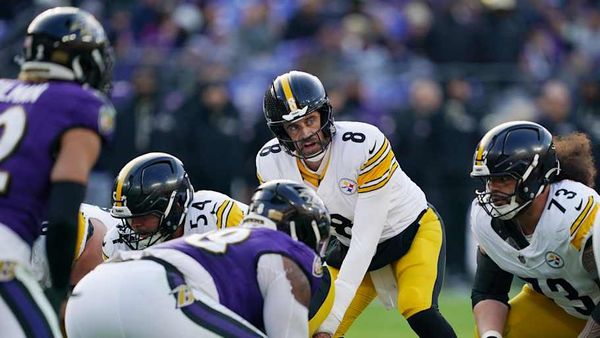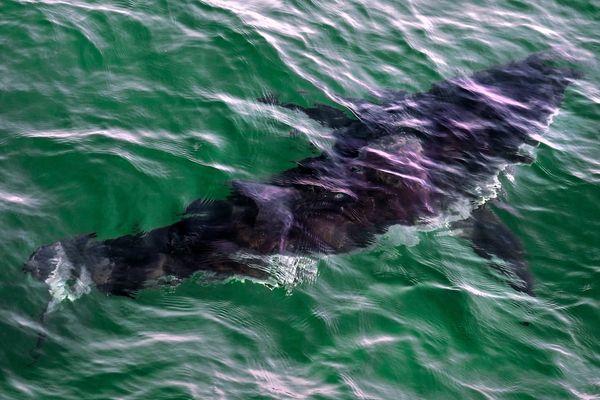Nuclear weapons are among the most devastating modern arms available. Ever since their creation, the threat of a nuclear war has loomed worldwide. From the first and only nuclear bombs dropped in 1945 to the Cuban Missile Crisis in 1962 to the current fears over the conflict in Ukraine, the US is a central figure in the nuclear weapon discussion.
How many nuclear weapons does the US currently have?
As of September 2020, the US had 3,750 nuclear warheads. That's 88% lower than the US's peak of 31,255 nuclear warheads in 1967. The current inventory includes active and inactive warheads. It does not include about 2,000 "retired" nuclear warheads scheduled for dismantling.
The US reduced its nuclear weapon inventory after the end of the Cold War with the then-USSR in 1989. The US dismantled 11,683 nuclear warheads from fiscal years 1994 through 2020.
What other countries have nuclear weapons?
Eight countries possess and have tested nuclear weapons, the US, Russia, Great Britain, France, China, India, Pakistan, and North Korea.
How many times were nuclear weapons used by the US?
The US is the only nation to use nuclear weapons in a conflict. In 1945, towards the end of World War II, the US dropped nuclear bombs on the Japanese cities of Hiroshima and Nagasaki. The bombings killed tens of thousands of people. The destruction of the two cities was the only time any nation used nuclear weapons.
Outside of combat, the US and other countries have detonated thousands of nuclear weapons as part of weapons testing. From 1945 to 1992, the US conducted 1,054 nuclear tests. Since 1963, the US has been part of the Limited Test Ban Treaty. Participating countries in the treaty agreed to refrain from explosive nuclear weapon tests in the atmosphere, outer space, or underwater. Since 1974, the US has been part of the Threshold Test Ban Treaty, which banned underground nuclear weapon tests of more than 150 kilotons of explosive force. The US hasn't tested a nuclear weapon since 1992.
In 1992, President George H.W. Bush signed a ban on underground testing of US nuclear weapons into law.
While the US helped negotiate the Comprehensive Test Ban Treaty, the Senate rejected the treaty in 1999. For that treaty to be valid, 44 specific countries needed to ratify it. Three of the 44 – India, North Korea, and Pakistan – have not signed it. Another five nations of the 44 – China, Egypt, Iran, Israel, and the US – have not ratified it. Since countries could join the treaty, India, Pakistan, and North Korea have conducted explosive nuclear weapon tests.
Are there any rules for using nuclear weapons?
The president possesses sole authority over the use of nuclear weapons. If the president dies, nuclear weapon authority follows the presidential line of succession.
Each presidential administration conducts a Nuclear Posture Review, as required by Congress. The first version of the review was completed in 1994. Starting with the 2010 review during the Obama administration, an unclassified version of the review is also released.
The most recent Nuclear Posture Review was released in March 2022, though the unclassified version will be published later. A press release from the Defense Department confirmed a commitment to reducing the role of nuclear weapons. It also said the US "would only consider the use of nuclear weapons in extreme circumstances to defend the vital interests" of the US or its allies and partners.
What’s the Nuclear Non-Proliferation Treaty?
The treaty started in 1970 to prevent the spread of nuclear weapons through non-proliferation, disarmament, and peaceful use of nuclear energy.
There are 191 nations involved in the treaty. Members of the treaty without nuclear weapons agree to reviews by the International Atomic Energy Agency to ensure nuclear material isn't used for weapons or exported to other countries. India, Pakistan, and North Korea are the only three known nations with nuclear weapons that are not part of the treaty. China and France did not initially sign the treaty. France signed in 1991. China signed in 1992. North Korea signed initially but withdrew from the treaty in 2003.
Disarmament among the eight known nuclear powers is done primarily through treaties. The US and Russia decreased their nuclear weapon inventory through the Strategic Arms Reduction Treaty and the New Strategic Arms Reduction Treaty.
A few nations developed and possessed nuclear weapons and later dismantled them all. South Africa was a nuclear power but eliminated all its nuclear weapons in 1990 and joined the Nuclear Non-Proliferation Treaty as a non-nuclear nation. Three nations formerly part of the Soviet Union dismantled their nuclear weapons after achieving independence. Kazakhstan disarmed in 1995. Belarus and Ukraine disarmed in 1996.
Read more about the state of the nation's defense and the Russia-Ukraine war.







